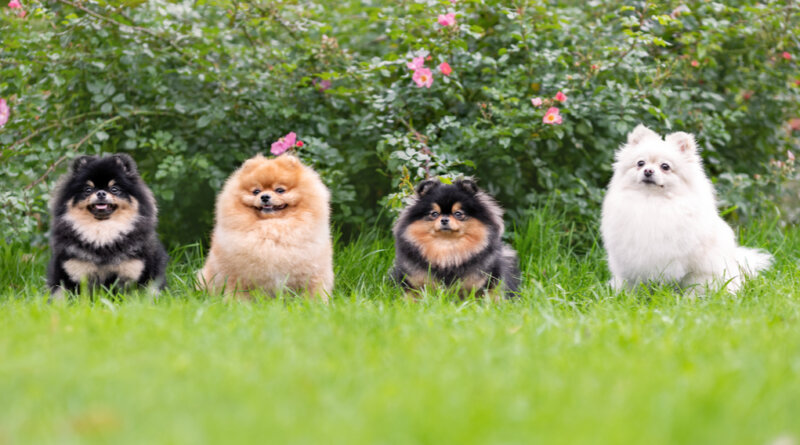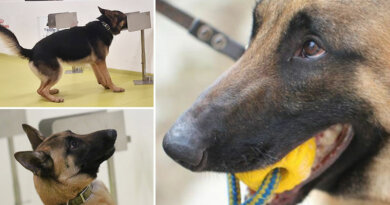Pomeranian Breed Profile and Everything You Need to Know
No other dog breed shows that “I-can-do-anything-I-want” attitude more than Pomeranians. Despite their small size, these feisty little dogs are more than most people think about them.
Pomeranians are tiny dogs with vivacious, bossy personalities and glorious coats. Most people think that they are these dogs with big-dog demeanor trapped inside a small canine body.
Still, with their unique personality and adorable size, it’s hard for them not to be on the list of the most popular dog breeds in the world. Pomeranian puppies are also brilliant, so it would be easy for dog owners to train them.
In this article, you will learn everything there is to know about. Pomeranian dogs This Pomeranian breed profile will help you understand more about this dog’s personality and how you can adequately take care of them.
Pomeranians: History and Origin
The Pomeranians are descendants of sizeable spitz-type sled dog breeds in Iceland and Lapland. Their name is derived from the place they originated, the province of Pomerania, a region in Northern Europe by the coast of the Baltic Sea.
However, other resources have shown that the term “Pomerania” it was derived from was not the place it originated from but rather where the “downsizing” took place.
Pomeranians are traced to be previously large sled dogs, and members of a family of dogs called the “Spitz Group. ” Dog breeds close relatives to this group include Siberian Husky, Alaskan Malamute, Norwegian Elkhound, and Eskimo Dog.
The first Pomeranians were said to weigh between 20 to 30 pounds. It gained popularity when Queen Victoria of England got them from a vacation in Florence, Italy, and started breeding them.
Back then, the Pomeranian dog was still slightly more significant than it is today. Queen Victoria started showcasing the Pomeranian dog breed in shows and breed competitions.
Poms were then bred to become even smaller as they gained more popularity. This dog breed reached the United States near the 20th century.
Pomeranian Facts You Probably Didn’t Know About
Ever wondered what makes this dog breed so likable? It turns out that many of the notable people in history showed a fondness for the Pomeranian dog breed.
Here are other interesting facts that you probably didn’t know about Poms:
- They are also called Dwarf Spitz, Zwergspitz, Loulou, or, affectionately, Poms.
- Queen Victoria’s favorite Pom, Turi, stayed by the foot of her bed when she lay dying in 1901
- Among the three dogs that survived the sinking of the Titanic, two of them were Pomeranians.
- Throughout history, other notable people who had Pomeranians include Michelangelo, Isaac Newton, Marie Antoinette, Wolfgang Amadeus Mozart, and Emile Zola.
- Michelangelo had a Pomeranian dog beside him while he was painting the ceiling of the Sistine Chapel.
- Pomeranians are excellent therapy dogs. Their compassion and intelligence make them excellent companions for hearing assistance.
Breed Standard of Pomeranians
The Kennel Club in England first recognized the Pomeranian dog breed in 1870 and called them Spitz dog. It was later identified as a breed by the American Kennel Club in 1888.
The Pomeranian dog breed is recognized with a variety of colors and markings. They are also part of the most popular dog breed list of AKC, ranking 23rd in 2021.
Main Characteristics of a Pomeranian
Pomeranians have their own set of unique traits that make them stand out from other dog breeds. Aside from their cuteness, they have this stern demeanor that you wouldn’t expect from this little dog.
Appearance and Physical Traits of Poms
The Pomeranian is a toy dog breed around 6 to 7 inches in height. Regardless of their gender, they can weigh from 3 to 7 pounds.
Poms have a life expectancy of 12 to 16 years of age. They don’t need much maintenance since their coat type and shedding are very manageable,
They generally have upright ears and a long double coat type. Their shedding level is below average, and Pomeranians only need regular brushing to keep their coat healthy and tidy.
Their color and markings vary, but the standard shades are cream, orange, sable, brown, black, white, and red. Moreover, the Pomeranian dog breed doesn’t drool much, and they are not the type of dogs that snore.
Pomeranians: Temperament & Personality
The Pomeranian dog is quite intelligent, and this breed is easily trained. This is the reason why most elder dog owners choose Pomeranians.
They are very energetic too. They need daily exercise, no matter how rigorous or simple the activity is.
You should also know that they tend to jump from one place to another, which could later hurt their back. Because of their small size, energy level, and intellect, you can quickly train them to use ramps or avoid jumping.
What makes the personality of Pomeranians distinct is their aggression. They are tiny dogs with prominent personalities.
Pomeranian dogs tend to bark a lot. Whether they face strangers or other dogs, they try to encounter them and alert you with their tiny barks.
Their cuteness is an understatement of their boldness. Sometimes, they forget that they are small and face dangers or large dogs with no fear.
They are attentive and alert and would do well as watchdogs. Pomeranians are also loyal companions and great family dogs.
ALSO READ: 14 Best Watch Dog and Guard Dog Breeds
Health and Common Illnesses in Pomeranians
One of the Pomeranian facts you should is that they are generally healthy. However, just like any dog breed, they may be susceptible to certain diseases.
If you are planning to buy a Pomeranian puppy, find a reliable dog breeder. That way, you can check the health history and other tests the Pom puppy went through.
Not all Pomeranian puppies experience these illnesses, but it pays to be aware of these conditions:
Allergies
Like other dogs, Poms can develop allergies from their environment or food. When this happens, make sure to take him to the vet immediately.
Epilepsy
Some Pomeranians suffer from epilepsy and experience seizures.
Eye problems
Adult Poms tend to have eye problems which may lead to blindness when left untreated. This includes progressive retinal atrophy, which is a degenerative eye disease.
Luxating Patella
This condition is prevalent in Pomeranian dogs. Patellar luxation refers to the kneecaps sliding out of place.
Hip Dysplasia
This hip deformity in Poms is caused by genetics, diet, or the external environment. Worst cases would need surgery, but most Pomeranians live everyday healthy lives despite this condition.
Collapsed Trachea
Pomeranians are tiny dogs that can easily have blocked trachea. This often happens when you pull the collar too hard or abruptly.
A clear sign of collapsed trachea among Pomeranian dogs is when they have a chronic, dry cough that sounds like a goose honk. When this happens, take your dog to the vet immediately.
Hypothyroidism
This happens when the Pom’s thyroid gland doesn’t produce enough hormones to aid your dog’s metabolism.
Congestive Heart Failure
Pomeranians are no exception to heart diseases. Congestive heart failure (CHF) is a complication of existing heart diseases and can be prevented with early screening.
Whenever you see any signs of pain, discomfort, and lethargy in your Pom Pom, it’s best to have them checked with your vet right away. You’d never know how mild or severe a condition is until you have them examined.
Pomeranians: Proper Care and Grooming
What makes Pomeranian dogs so distinct is their double coat fur. Fortunately, one of the best Pomeranian facts you should know is that they only need less maintenance.
You will need to do frequent brushing down to the skin using a slicker brush. You can brush your Pom’s fur at least once a week to keep it from tangles and mats.
Pomeranians are moderate shedders, and their shedding would depend on the season. The above-average shedding often happens during spring or fall.
These Pomeranian puppies are known to be active dogs, so it’s best to keep their nails short. Also, keep in mind that they are pretty sensitive to heat.
Give your Poms time to cool down after exercising or going out for a walk. It would also be helpful if they had an excellent place to rest inside your home.
Like any dog, they need to have their ears cleaned regularly, and teeth brushed daily. However, if you don’t have the time for that, visiting their groomer regularly will do the job.
When it comes to their mental health, Poms love constant stimulation, but their attention span is relatively short. You can have quick outdoor walks and regular playtimes.
You can also indulge your Pomeranian puppy in training sessions. But make sure to keep the training brief, fun, and stimulating.
ALSO READ: Grooming Different Types of Dog Coats
Common Questions Asked About Pomeranians
Are you planning on getting a Pomeranian puppy? Before deciding, you probably have several questions about this breed.
Here are common questions people ask about Pomeranian dogs and some answers.
Is a Pomeranian Good for First-Time Dog Owners?
Poms are affectionate and loyal canine companions, making them perfect for first-time dog owners. They love to be around their owners, requiring only minimal requirements.
If you adopt a Pomeranian puppy with your young family for the first time, this dog breed is not recommended for little children. They can get aggressive or too playful, resulting in consequences you don’t want.
How Much is a Pomeranian?
Pomeranian prices will vary depending on their availability in the market. If you get Pomeranian puppies from reputable breeders, you’ll get them at around $500 to $6,000.
On the other hand, you can get specialty breeds such as the black Poms at a much higher Pomeranian price.
Can You Leave Pomeranians Home Alone?
Pomeranian dogs are tiny active pooches with minimal attention span. You can leave them alone for one to eight hours, but they might start making trouble.
Fortunately, Poms are intelligent and easy to train. So you can help them deal with being home alone better as they mature.
Why Are Pomeranian Dogs so Expensive?
Poms are a fancy breed that requires long hours of care from the moment they are born. Due to their size, you need to be extra careful with these dogs.
Pomeranian puppies are also prone to infections at a younger age. So, breeders need to have them on several health evaluations before selling them.
When Do Pomeranians Go Into Heat?
Adult Pomeranians start to heat around five or six months of age. It usually happens every five to eight months.
This means your Pom could be in heat twice or thrice a year. Still, the heat cycle of your pooch will depend on their health and genetic factors.
How Big Do Pomeranians Get?
Adult Pomeranians can grow as tall as 12 inches. Despite being descendants of large-sled dogs, Pomeranian dogs are part of the toy dog breed.
So, if you are looking for tiny pooches, Pomeranian puppies ought to be at the top of your list. They also don’t grow heavier than 7 pounds.
Pomeranian Dog Breed In Summary
If you are looking for a great family dog under the toy dog breed group, you should adopt a Pomeranian. This dog breed is a loveable, active, and intelligent dog loyal to your entire family.
While They may not highly recommend them for families with small children, You can train Pomeranian puppies to treat other family members well. Poms are favorites among young and older adults.
They are easy to train, and they love to learn new tricks. Pomeranians would also live well with adults who are either physically active or homebodies.
Pomeranians are also known for their superior and aggressive demeanor despite their cute and fluffy appearance. They sometimes forget how small they are and would even bark against large dogs and strangers.
These Pomeranian dogs have earned their spot on the most popular dog breed list and have continued to gain popularity. Whenever you plan to adopt a Pom on your own, always get them from a reputable breeder.
READ NEXT: Best Dog Food for Pomeranians: 9 Vet Recommended Brands
Related









